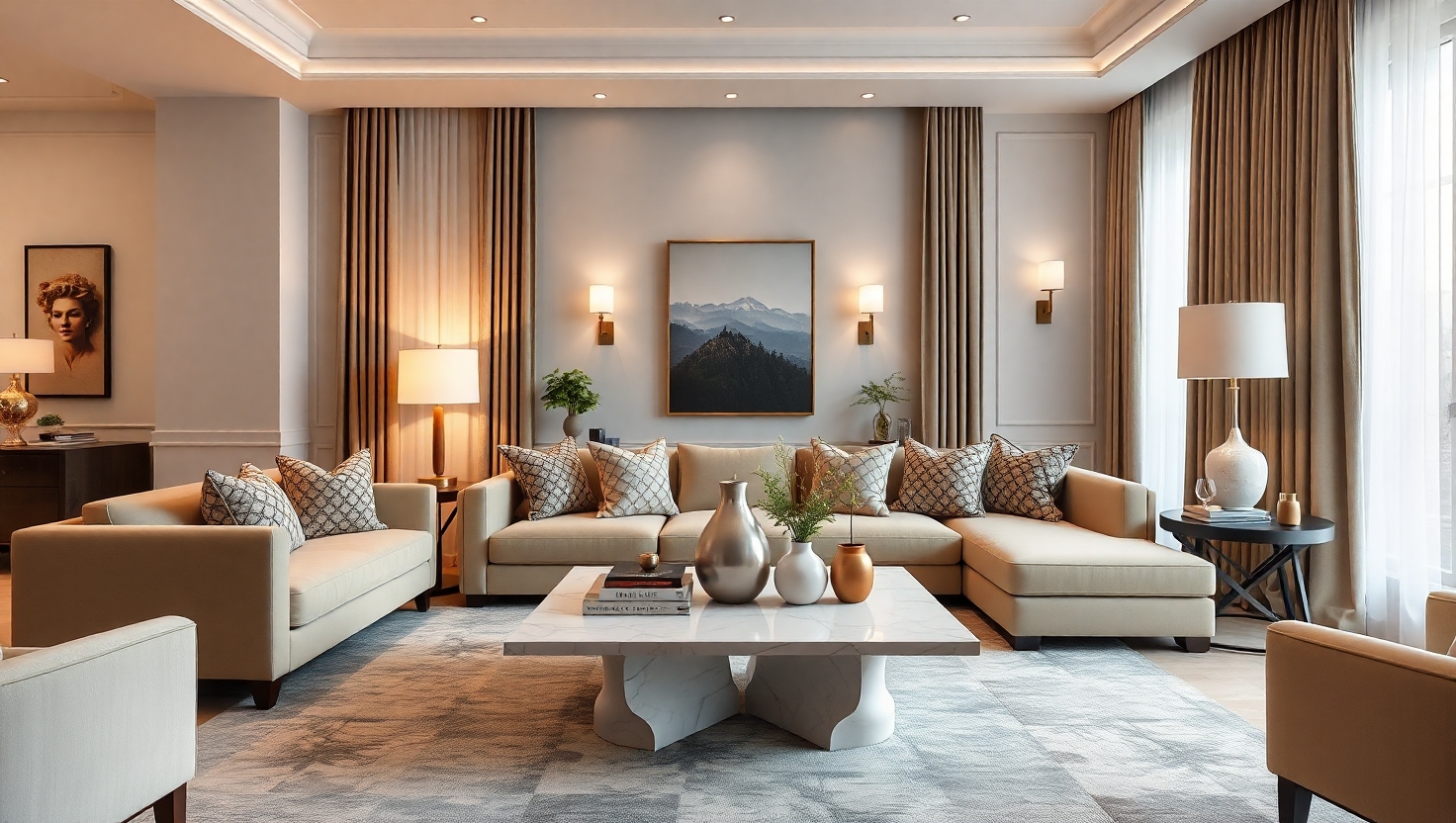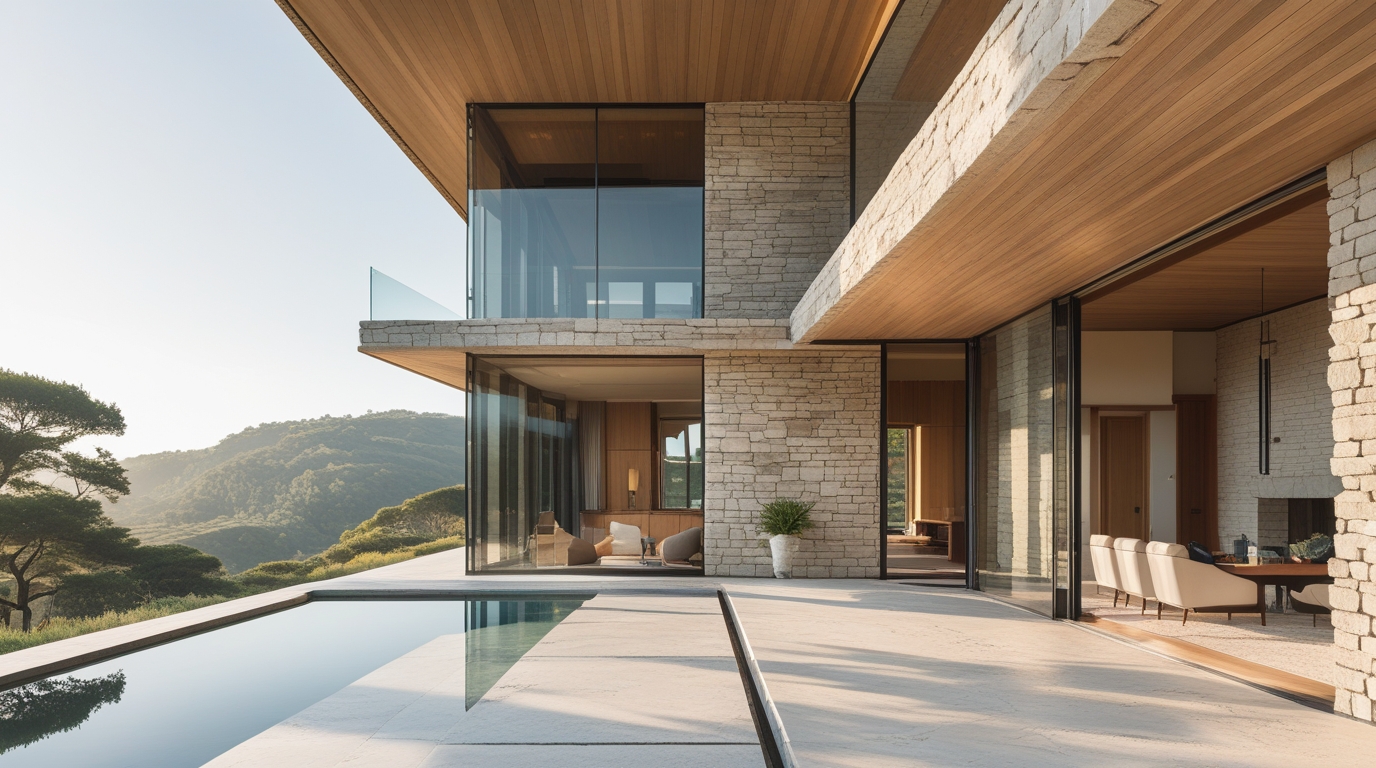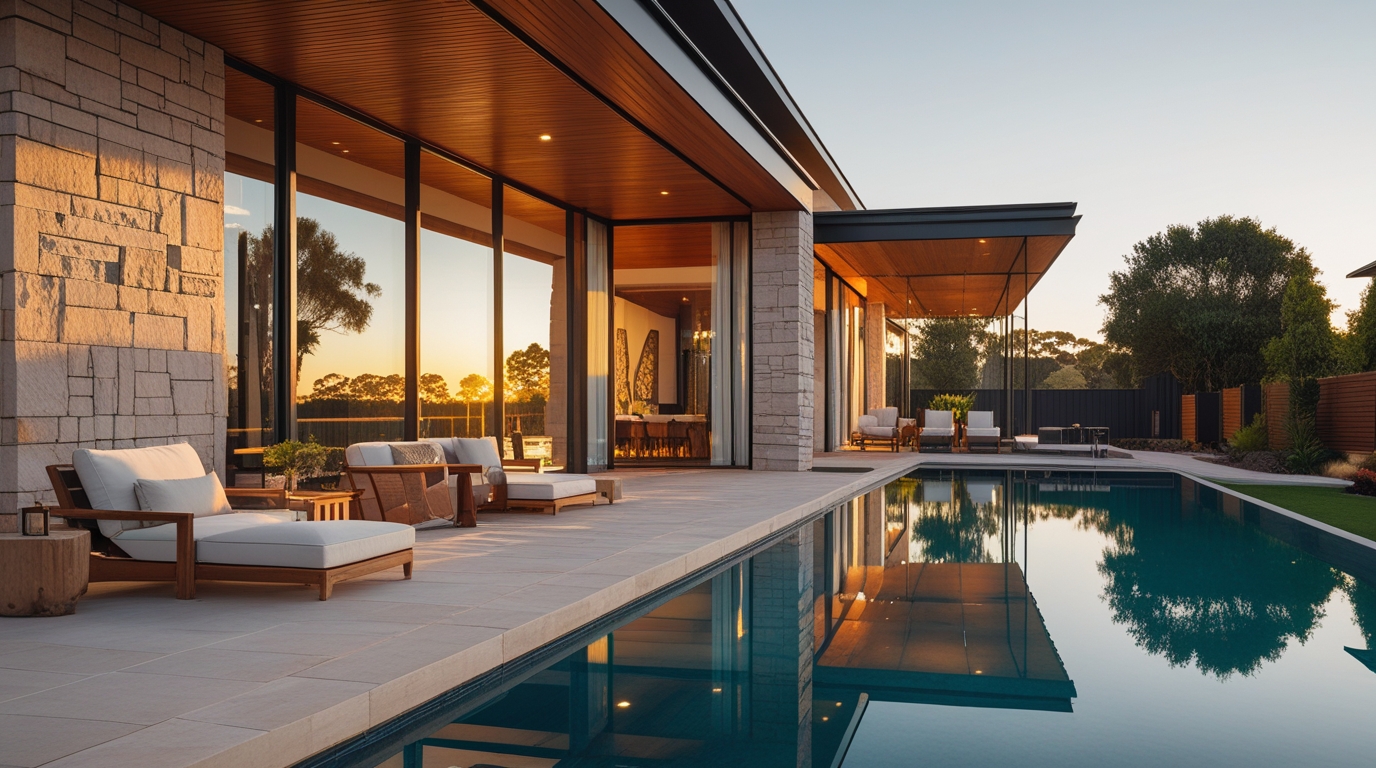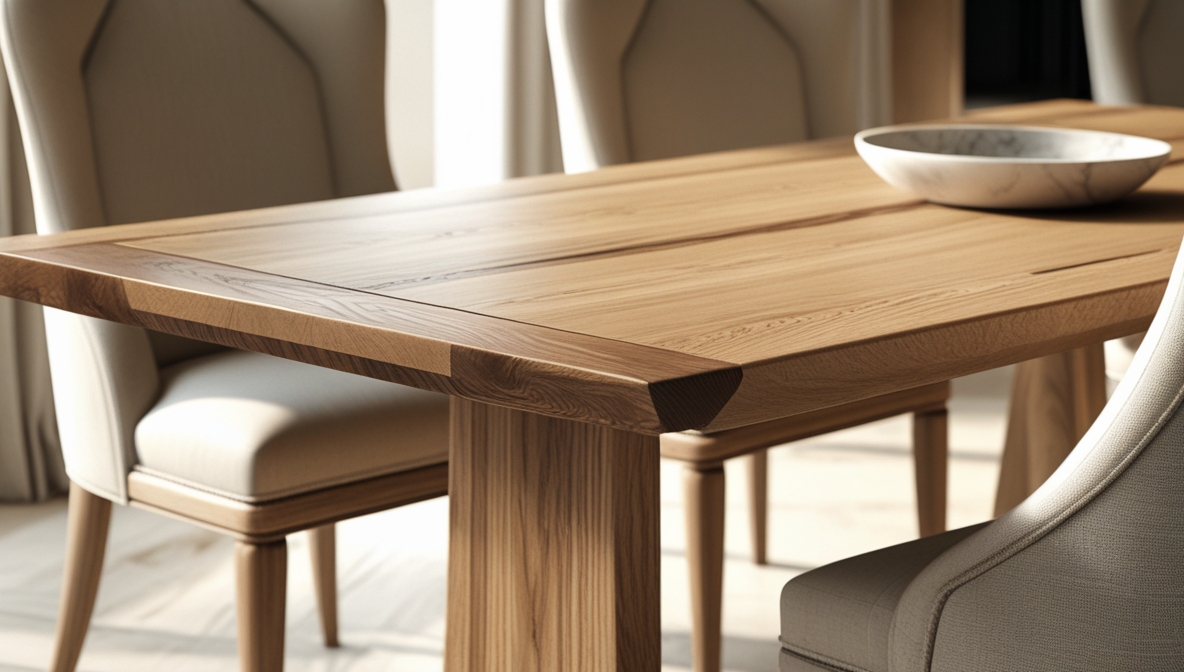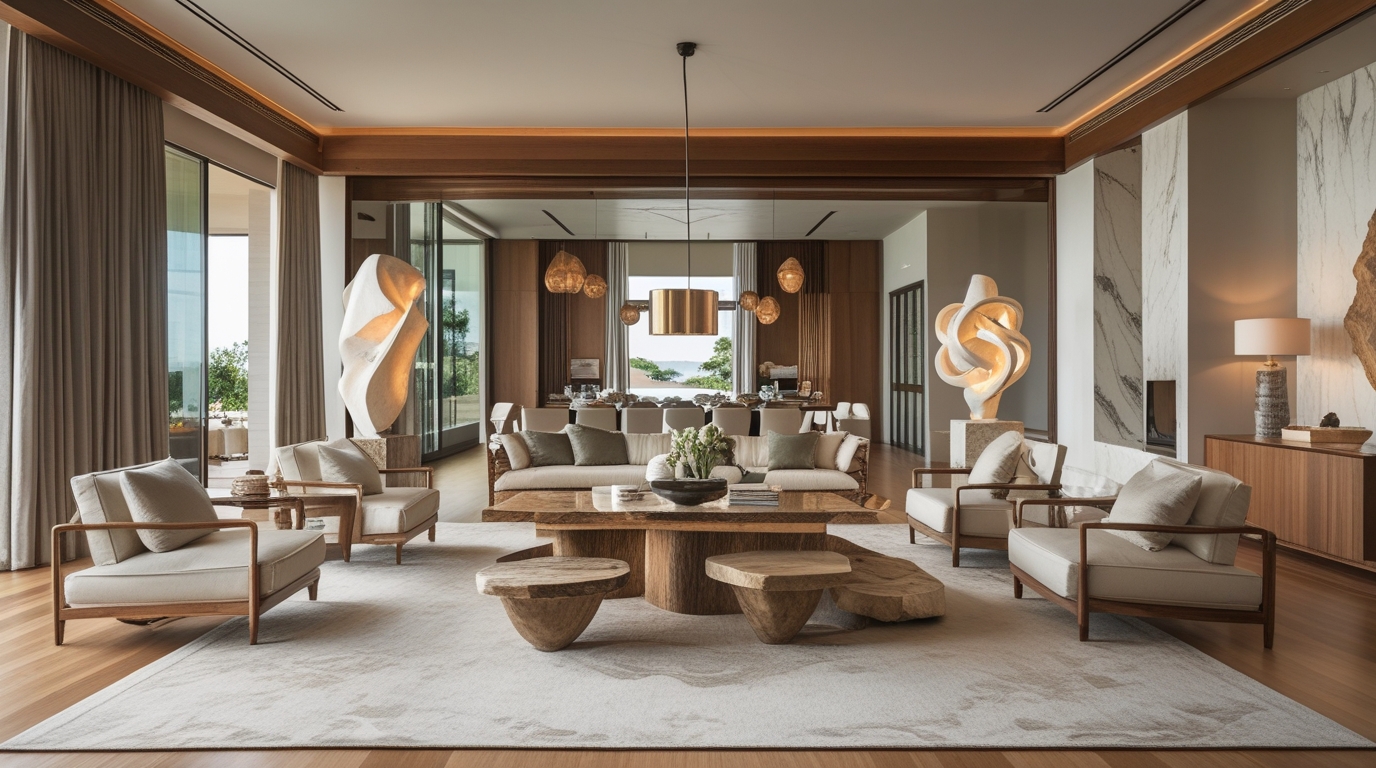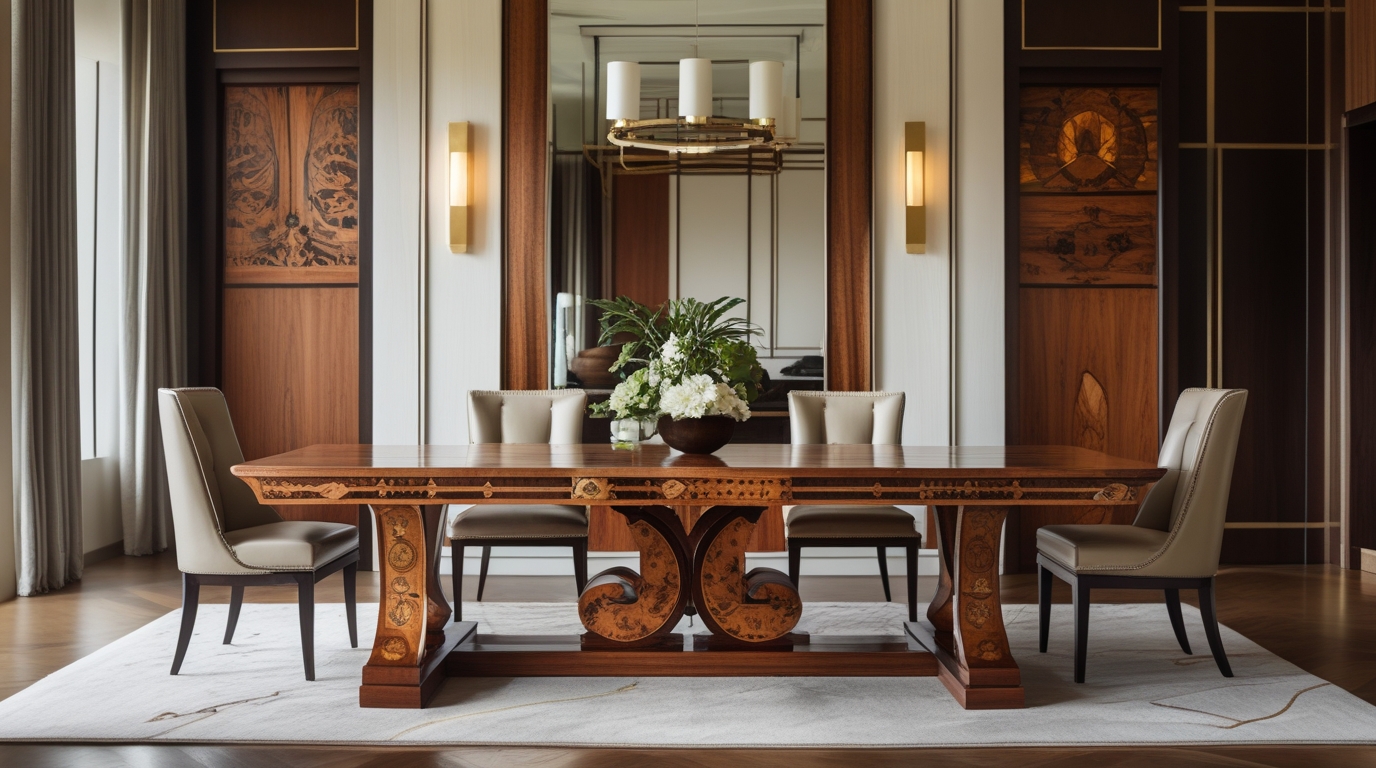In today’s world of refined living, beauty and responsibility are no longer separate ambitions. The materials we use to create high-end interiors—whether it’s timber, stone, fabrics, or finishes—now carry an added expectation: they must be sustainable.
Discerning homeowners are increasingly demanding interiors that align with their values. But sustainability doesn’t mean compromising on quality or elegance. In fact, many of the world’s finest materials are also among the most environmentally responsible—when sourced and crafted the right way.
This article will guide you through the finest eco-conscious materials shaping today’s luxury interiors, revealing how premium design and environmental responsibility can go hand in hand.
Why Material Selection Matters More Than Ever
Every decision made in designing or furnishing a home has a ripple effect—on the environment, communities, and long-term quality of living. Eco-conscious design starts with the materials themselves.
Thoughtfully chosen materials:
- Reduce carbon emissions
- Improve indoor air quality
- Promote healthier lifestyles
- Offer superior durability and timeless appeal
As Peter Stewart, CEO of The Exclusive Home, states:
“Luxury design is about more than appearance—it’s about choosing materials that respect the planet, support skilled artisans, and offer our clients longevity without compromise.”
1. Sustainable Timbers: The Cornerstone of Eco-Luxury
Nothing conveys warmth and refinement quite like wood. But not all timber is created equal.
Best Practices:
- Choose FSC-certified timber to ensure forests are responsibly managed.
- Opt for plantation-grown hardwoods like American Oak or European Ash.
- Reclaimed or recycled wood adds a sense of history and dramatically reduces environmental impact.
Why It’s Luxurious:
High-grade, sustainably harvested timber offers unique grain, rich patinas, and a connection to nature that synthetic materials can never replicate.
At The Exclusive Home, all wooden pieces—whether a grand dining table or bespoke sideboard—are crafted from premium-grade timber with ethical provenance.
2. Natural Stone with Ethical Sourcing
Marble, travertine, and granite are perennial favourites in high-end design. But stone extraction can be environmentally and socially problematic if not managed carefully.
Sustainable Stone Strategies:
- Select from quarries that use ethical labour and restoration practices
- Explore engineered stone alternatives made with recycled content
- Choose locally sourced stone to reduce transport emissions
Eco-Luxury Applications:
- Custom stone consoles
- Feature kitchen islands
- Spa-like bathrooms
- Stone-clad fireplaces
Natural stone remains a timeless choice. When selected from responsible suppliers, it brings luxury and conscience together effortlessly.
3. Aluminium and Metal Accents—Recyclable, Durable, Beautiful
Aluminium is a surprisingly sustainable hero in interior and outdoor furniture.
Why Aluminium?
- It is 100% recyclable without losing quality
- It’s extremely lightweight, reducing transport emissions
- It resists corrosion—perfect for coastal homes or wet areas
For high-end outdoor settings, The Exclusive Home uses aluminium frames treated with advanced powder coating that resists weather damage and extends the life of every piece.
Brushed brass, matte black steel, and other metals are also widely used in eco-luxury interiors when sourced from reputable, low-impact manufacturers.
4. Organic and Renewable Fabrics
Soft furnishings define the comfort and tone of a room. Eco-conscious designers now favour natural fibres that are biodegradable, low-impact, and healthy for home environments.
Top Eco-Luxury Fabrics:
- Linen – made from flax, low water requirement, long-lasting
- Organic cotton – grown without pesticides, breathable and soft
- Wool – natural insulator, biodegradable, and flame-retardant
- Hemp – highly renewable and durable
Fabric Innovation:
At The Exclusive Home, you’ll find luxurious upholstery options that are both beautiful and responsible. Fabrics are available in hundreds of tones, weaves, and textures—free from harmful chemicals and designed to endure.
For outdoor pieces, high-performance fabrics treated for the Australian climate provide UV resistance, water repellency, and fade protection—without the use of toxic sprays or coatings.
5. Recycled and Upcycled Elements
In modern luxury, reuse is not a compromise—it’s a design statement.
Recycled materials can offer character and texture while reducing landfill and demand for new resources.
Creative Uses:
- Recycled glass for splashbacks or benchtops
- Upcycled timber for wall panelling or joinery
- Reclaimed metals as sculptural or decorative features
- Vintage elements reimagined into bespoke furniture
By incorporating these into a home’s architecture or furniture, clients benefit from one-of-a-kind design with built-in heritage and reduced environmental cost.
6. Non-Toxic Finishes, Glues and Paints
Eco-luxury extends beyond visible surfaces. Many traditional furniture coatings and adhesives emit volatile organic compounds (VOCs), which compromise indoor air quality.
What to Look For:
- Low-VOC or no-VOC paints and stains
- Water-based finishes
- Formaldehyde-free adhesives
- Natural oils and waxes for wood treatments
These alternatives don’t just support health—they add natural lustre and allow surfaces to age gracefully.
The Exclusive Home uses low-emission finishes on timber products to ensure the longevity of the product and the wellbeing of the household.
7. Glass—Natural, Recyclable and Light-Enhancing
Glass is one of the few materials that can be endlessly recycled without losing quality. It’s also used to stunning effect in modern interiors.
Sustainable Glass Applications:
- Frameless showers with recycled content
- Oversized windows for passive solar heating
- Custom pendant lights or hand-blown décor
- Tabletops and mirrors
When combined with thoughtful lighting and natural textures, glass helps maximise the sense of space, light, and elegance.
8. Responsible Leather and Leather Alternatives
Leather has long been a symbol of luxury. Today, clients increasingly demand leather that is not only premium in quality but also ethically sourced.
Options for Eco-Conscious Interiors:
- Vegetable-tanned leather using natural dyes and no toxic chemicals
- By-product leather from meat production to reduce waste
- Eco-certified suppliers with sustainable farming practices
- Innovative vegan alternatives such as Piñatex (pineapple fibre), mushroom leather, or recycled composites
At The Exclusive Home, premium leathers are selected with both elegance and ethics in mind—available in rich tones and refined textures to suit the most demanding interiors.
9. Ceramic, Terracotta and Clay Finishes
Timeless and earthy, ceramic materials have experienced a renaissance in high-end interiors.
Why Ceramic?
- Made from natural elements like clay and sand
- Easily recyclable and extremely durable
- Offers a refined, handcrafted appearance
Applications include:
- Custom wall tiles
- Statement lighting
- Decorative pottery
- Hand-formed basins
Australian homeowners seeking a connection to nature through texture and earth tones are embracing these materials across bathrooms, kitchens and patios.
10. Bamboo and Cork—Fast-Growing and Functional
Though often associated with lower-end products, high-quality bamboo and cork can now be found in luxury interiors as flooring, cabinetry, and acoustic paneling.
Benefits:
- Rapid renewability – bamboo can grow up to a metre per day
- Naturally antimicrobial and hypoallergenic
- Striking grain patterns and colour tones
- Soft underfoot and sound-absorbing
Used properly, these materials can create spaces that feel sophisticated, organic, and acoustically comfortable.
Bringing It Together: The Designer’s Responsibility
Designers and homeowners who are committed to sustainability can achieve extraordinary interiors—ones that are not only beautiful and functional but also meaningful.
By selecting furniture and décor from ethical manufacturers like The Exclusive Home, clients are:
- Supporting local craftsmanship
- Reducing environmental impact
- Elevating the standards of luxury design
Peter Stewart shares:
“The future of high-end interiors lies in materials that honour both our personal lifestyle and the shared world around us. At The Exclusive Home, we help our clients design homes that reflect their values—without ever sacrificing beauty.”
Choosing the Right Supplier: What to Ask
When sourcing eco-conscious materials or furniture, here are key questions to ask:
- Is the product made in Australia or imported?
- What certifications or sustainability credentials does it carry?
- Are materials recyclable, biodegradable, or renewable?
- Were non-toxic finishes used in its manufacture?
- Is the supply chain transparent and ethical?
Reputable businesses—like The Exclusive Home—won’t hesitate to answer these questions. In fact, they’ll take pride in it.
Creating a Home That Reflects Your Values
From the foundations of your floors to the fabric of your cushions, every material in your home tells a story. When that story includes craftsmanship, care, and conscious choices, the result is more than design—it’s a legacy.
Whether you’re renovating an established residence or building your dream home from the ground up, consider the materials that will surround you for years to come.
Partner with suppliers who believe what you believe: that luxury should never come at the expense of the planet.
Final Thoughts
The future of luxury is not synthetic—it’s sustainable.
Eco-conscious materials are now leading the way in high-end interior design across Australia. From responsibly harvested timber and organic textiles to low-emission finishes and reclaimed features, the options are not just growing—they’re setting new standards.
If you’re ready to embrace sustainable sophistication, www.theexclusivehome.com.au offers the craftsmanship, materials, and expertise to bring your vision to life.
Because truly beautiful interiors don’t just impress—they inspire.



